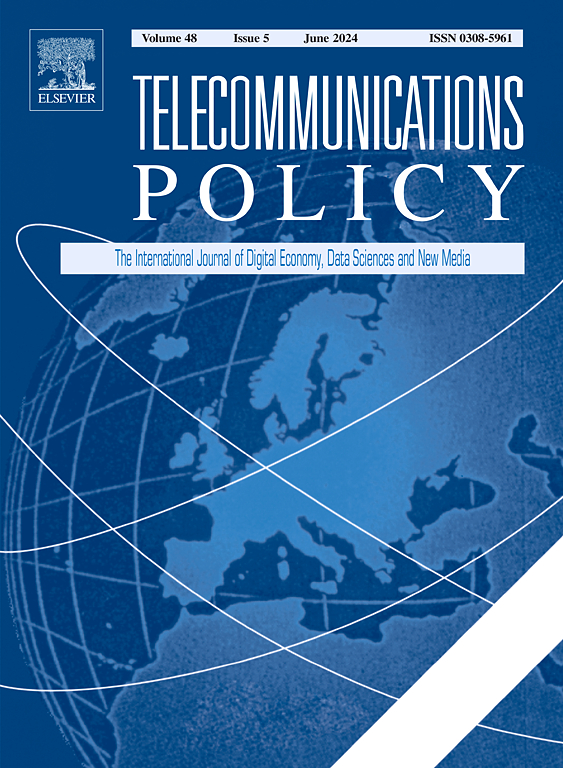Promoting the adoption of digital technology: Strategic policy insights from a network effects model
IF 6.4
2区 管理学
Q1 COMMUNICATION
引用次数: 0
Abstract
This paper examines a dynamic model of digital adoption by firms, incorporating network effects and highlighting the crucial role of government intervention to avoid a low stable equilibrium. The paper presents a strategic policy framework for promoting digital adoption effectively, offering three key insights for policy efforts targeting SMEs.
First, there is a risk of ending up at a stable low equilibrium rate of digital adoption despite an initial surge in interest. Sustaining momentum beyond initial promotion efforts is essential. Second, it is critical to make a significant push when the digital adoption rate is approaching critical mass. This tipping point enables continuous, self-sustaining expansion. Third, understanding technology adoption cycles and allocating resources effectively is crucial. Once the adoption rate passes the critical threshold, further adoption occurs without promotional interventions. Resources should then be reallocated to foster the adoption of new technologies or applications, ensuring optimal use of limited resources to drive ongoing innovation and progress.
The study also reveals that countries with a larger population of SMEs, due to either a large population or strong entrepreneurial environment, may find it relatively easier to promote digital adoption in this sector.
促进数字技术的采用:从网络效应模型看战略政策
本文研究了企业采用数字化技术的动态模型,纳入了网络效应,并强调了政府干预在避免低稳定均衡方面的关键作用。本文提出了一个有效促进数字化应用的战略政策框架,为针对中小企业的政策努力提供了三个重要启示。首先,尽管最初的兴趣激增,但最终仍有可能出现稳定的低均衡数字化应用率。在最初的推广工作之后,保持势头至关重要。其次,在数字化应用率接近临界点时,必须大力推动。这一临界点可以实现持续的、自我维持的扩展。第三,了解技术采用周期并有效分配资源至关重要。一旦采用率超过临界点,无需推广干预就会进一步采用。因此,应重新分配资源,促进新技术或新应用的采用,确保有限的资源得到最佳利用,推动持续创新和进步。研究还显示,由于人口众多或创业环境浓厚,中小型企业数量较多的国家可能会发现,在这一部门推广数字化应用相对更容易。
本文章由计算机程序翻译,如有差异,请以英文原文为准。
求助全文
约1分钟内获得全文
求助全文
来源期刊

Telecommunications Policy
工程技术-电信学
CiteScore
10.80
自引率
12.50%
发文量
122
审稿时长
38 days
期刊介绍:
Telecommunications Policy is concerned with the impact of digitalization in the economy and society. The journal is multidisciplinary, encompassing conceptual, theoretical and empirical studies, quantitative as well as qualitative. The scope includes policy, regulation, and governance; big data, artificial intelligence and data science; new and traditional sectors encompassing new media and the platform economy; management, entrepreneurship, innovation and use. Contributions may explore these topics at national, regional and international levels, including issues confronting both developed and developing countries. The papers accepted by the journal meet high standards of analytical rigor and policy relevance.
 求助内容:
求助内容: 应助结果提醒方式:
应助结果提醒方式:


